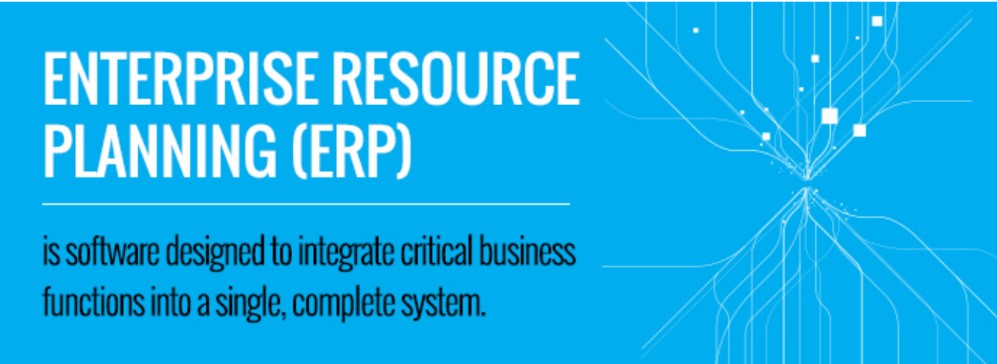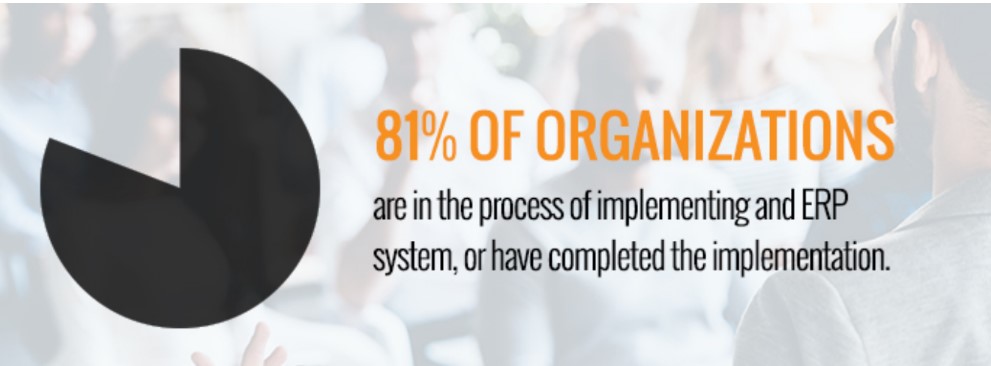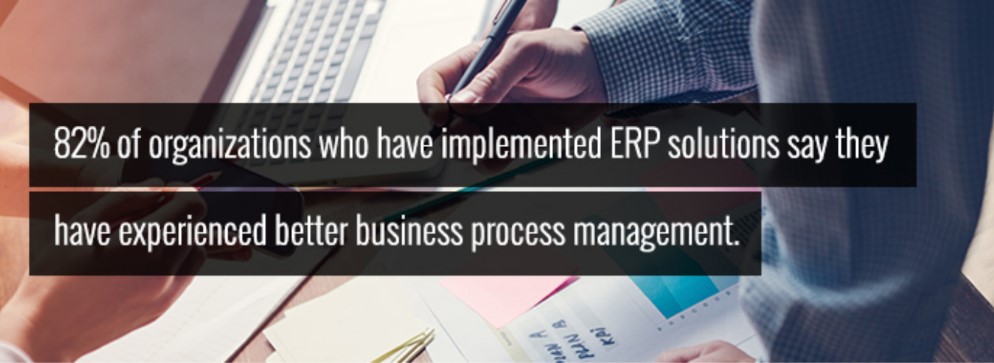What is ERP software and what are its benefits? You may already know the answer to these questions. If not, we think this is a great place to start.
What Is Enterprise Resource Planning?
What is ERP, then? Why exactly should it matter to you? It allows for the streamlining of processes and information between multiple units across an entire company.

As technology becomes more capable, ERP systems are becoming more critical for companies looking to enhance efficiency without adding program after program to their processes. ERP is designed to simplify complex processes while increasing functionality and capabilities.
ERP is not new, but its importance has grown rapidly over the past few years. The term was coined by Connecticut-based Gartner, Inc. in the 1990s and is described as “an application and deployment strategy that expands out from ERP functions and achieves integration of an enterprise’s key domain-specific, internal and external collaborative, operational and financial processes.”
Today, ERP is more than just a system. It’s a process designed to improve businesses across all industries. This makes it absolutely necessary. According to Gary Forger in “Modern Materials Handling,” ERP “acts as a planning backbone for a company’s core business processes.”
Because its capabilities are almost limitless, businesses are catching on. According to the latest Panorama study, 81% of organizations surveyed are in the process of implementing an ERP system or have completed their implementation. The reasons for implementing software vary from one organization to another, but they include:
- Replacing out-of-date software (49%)
- Replacing homegrown systems (16%)
- Replacing accounting software (15%)
- Starting from scratch with no existing system (20%)

The bottom line is that ERP solutions are necessary and critical for staying competitive, accurate and efficient in today’s marketplace.
One ERP Solution Doesn’t Fit All
Just because a solution seems like it could work in any industry doesn’t mean it’s right for yours. Based on this, some companies offer customization of ERP software solutions on an item-by-item basis, which can be time-consuming and costly to implement and maintain.
Due to this challenge, companies in the apparel industry are often left wondering where to begin. The solution lies in modular-based ERP solutions. When apparel-specific ERP software is put in place, it adds functionality while reducing manual processes and isolated spreadsheets.
Examples of ERP Software for Apparel modules include:
- Order Processing and Returns Management: When order management is streamlined, the order life cycle — from receiving quotes and orders through fulfillment and invoicing — is more efficient. This leads to more on-time deliveries and improved client satisfaction. Thanks to an apparel matrix, order entry and purchasing can be simplified. The matrix enables users to enter specific quantities based on variations in products, like color and size. The matrix also makes it easy to view which products are available, in real-time, to give the customer an idea of whether an order will be fulfilled right away or backordered.
- The Decoration Module: Decoration Modules take order entry one step further by streamlining the process specifically for the maintenance of decoration orders. The right Apparel Software will manage the entire process, including receiving an order with one or multiple art records that need to be applied to the garment, handling the proof approval process and managing the work order flow for applying art records, either internally or at a third party.
- Purchasing and Forecasting: Determining what to buy, when to buy and how much to buy is the key to an integrated Forecasting System. The automation of Purchase Orders from the forecast and having the P/O’s ultimately tied to the Accounts Payable is a must for any Apparel Solution. Forecasting by style/color and style/color/size allows Apparel Companies to forecast at the top level by style, ensuring Apparel Companies can predict their apparel inventory needs more Accurately.
- Accounting and Financial Management: Many Apparel Software solutions say they are a complete ERP, but they don’t have a native Accounting and Financial Management solution. Most Apparel ERP Solutions integrate to an Accounting Solution. Because the Accounting Solution helps drive the financial success of Apparel Business, why would you want to integrate to an external solution?
- Inventory Management: Accurate inventory tracking is essential for the apparel industry. The right apparel inventory management system will be designed specifically to showcase inventory views by SKU, style/color or style. Additionally, ERP inventory software for apparel manufacturing allows key inventory information to be shared across the system for more efficient management and increased product availability.
- Manufacturing: The manufacturing modules will automate supply chain processes from inside FDM4, improve visibility and accounting of external and internal costs, more accurately plan material requirements and easily interface to external systems. With the unique needs of the Apparel industry in mind, the workflow process was designed to handle multiple types of manufacturing workflows, even within the same production of a style, with multiple bills of materials and workflow design by style. All the modules mentioned above are designed specifically to be textiles manufacturing ERP solutions. The modules provide a way to mitigate item-by-item customization complexities and costs.
Challenges Specific to ERP for the Apparel Industry
To understand the benefits of an ERP system and software for the apparel industry, it’s important to realize the challenges that make the industry unique:
1. Cost Savings
Cutting costs is critical for experiencing growth. When apparel companies work with an ERP system, they can expect to need less warehouse space, due to better and more efficient planning. This in turn can reduce operational and administration costs and lead to better business process management – a benefit cited by 82% of organizations that have implemented ERP solutions.

2. Apparel Product Data Management
The Apparel industry has one of the most challenging product environments. With constantly evolving trends, styles with short lifespans and an enormous variety of styles, colors and sizes, it’s no wonder Apparel Companies have issues updating their software database with all the new information. The right Apparel Software Solution will address this need with an automated, easy- to-use Product Load module that allows users to load and manage styles and items, including colors, sizes, features, images, pricing, costing and all other pertinent information from Excel format. This ensures that once a new style is approved, all the required data is loaded without manual data entry and the complications — and delays— that often accompany it.
3. Relationship Management — Customers
Without customers, your apparel business will fall flat. Keeping customers satisfied ensures they remain loyal and your business remains steady. ERP solutions for the apparel industry simplify order management from start to finish, in a single database, without maintaining multiple systems – which can cause delays and frustrations on both ends. Module-based ERP systems for the apparel industry are not optional. They’re absolutely necessary for success.